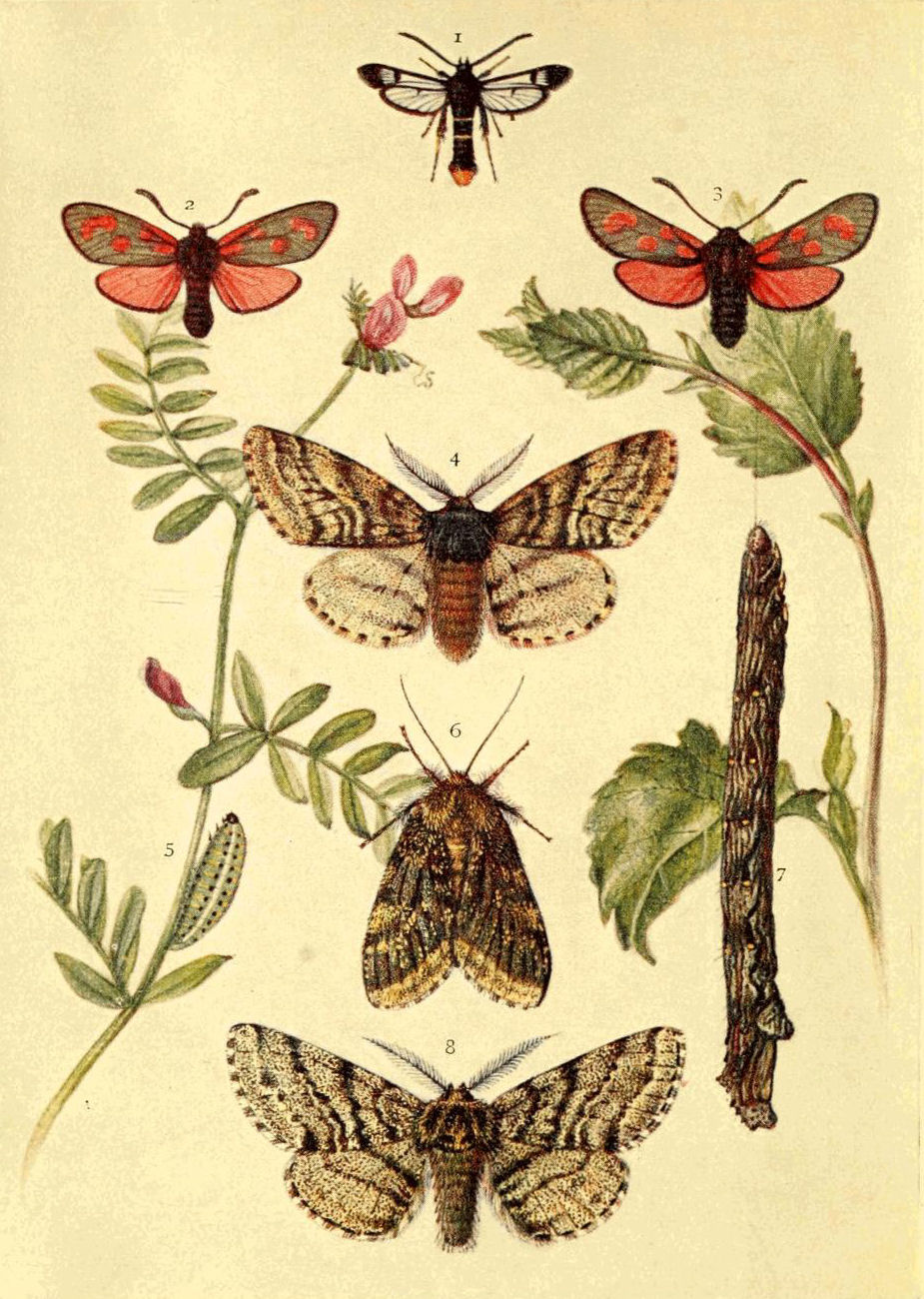| 2 Pl. 1. | ||||
| ||||
|
THE MOTHS
OF THE
BRITISH ISLES
BY
RICHARD SOUTH, F.E.S.
AUTHOR OF
"THE BUTTERFLIES OF THE BRITISH ISLES"
EDITOR OF "THE ENTOMOLOGIST," ETC.
SECOND SERIES
COMPRISING
THE FAMILIES NOCTUIDÆ TO HEPIALIDÆ
WITH
ACCURATELY COLOURED FIGURES
OF EVERY SPECIES AND MANY VARIETIES
ALSO DRAWINGS OF EGGS, CATERPILLARS,
CHRYSALIDS AND FOOD-PLANTS
LONDON
FREDERICK WARNE & CO.
AND NEW YORK
1909
(All rights reserved)
PREFACE.
In the present and previous series of "The Moths of the British Isles," over 750 species have been portrayed on the plates and described in the text—a number that includes all those insects formerly grouped under the now obsolete term "Macro-Lepidoptera." The task of dealing with so many species in two volumes has necessarily imposed brevity in their treatment; but it is hoped that nothing has been omitted that could be legitimately regarded as falling within the scope of volumes especially designed for the votaries of Nature Study.
To have comprised in this scheme the large contingent of our moths known as "Micro-Lepidoptera" would have reduced further the space available for those species which experience shows appeal to the majority of nature students in a way that the minuter forms may not do. Even then, only a few general remarks on each group would have been possible, with, perhaps, a portrait or two of representative species. Such a course seemed hardly likely to prove of practical utility. The "Small Fry," as they have been called, exceedingly interesting though they may be to a limited number of students, have therefore been left for separate treatment at some more convenient season.
Both classification and nomenclature are always under revision, and we are probably a long way from hearing the last word concerning either. These are, however, matters that {vi}cannot be ignored even in a popular work; consequently I have ventured to adopt sundry changes in arrangement and in names which, although not departing from the old style in any very large way, still approach pretty closely to the new.
I have again to tender my sincere thanks to Mr. Robert Adkin, F.E.S., for kindly lending specimens of rare species and varieties for figuring; and also to Mr. B. Adkin, Mr.
